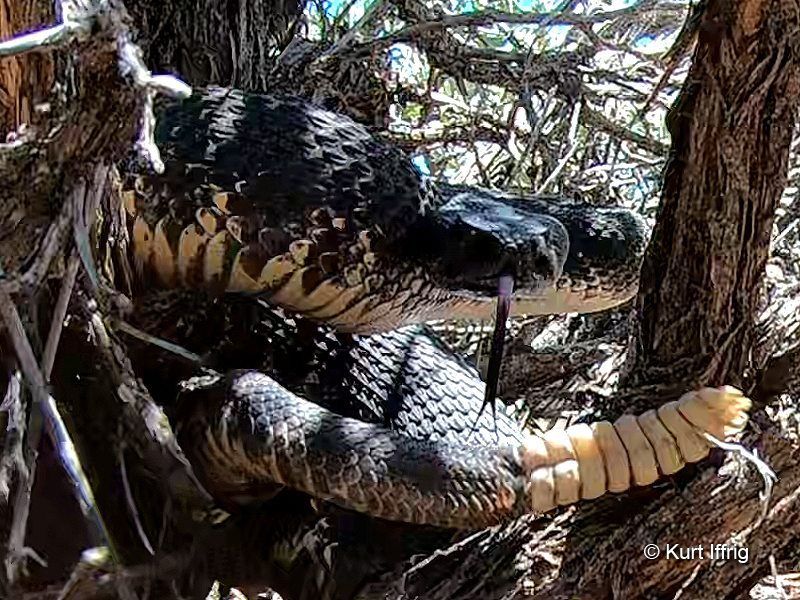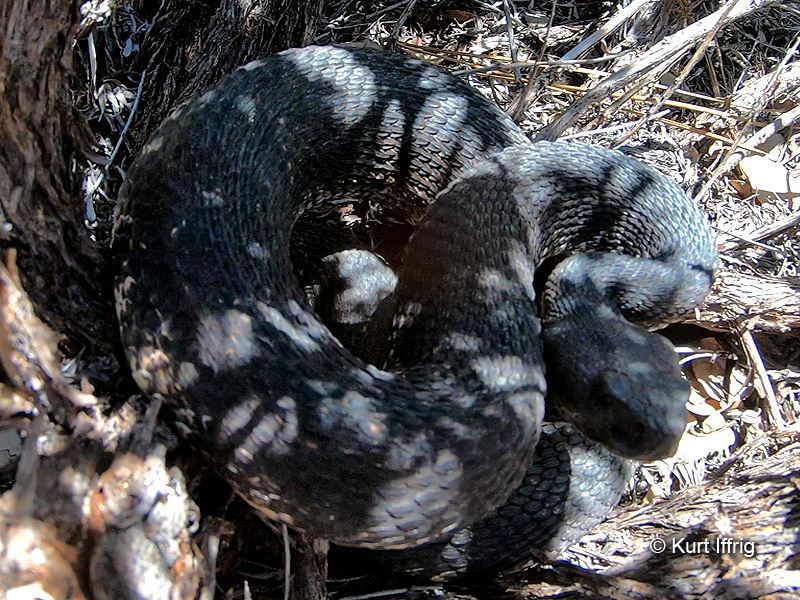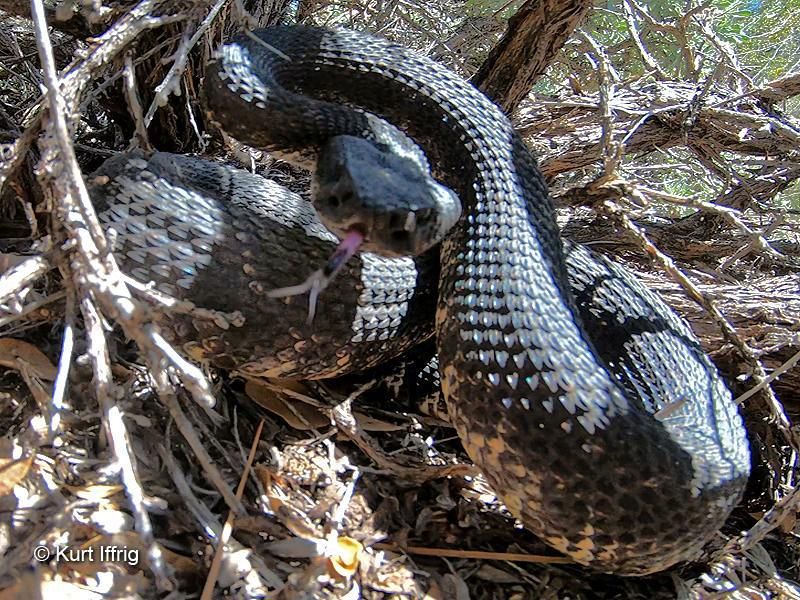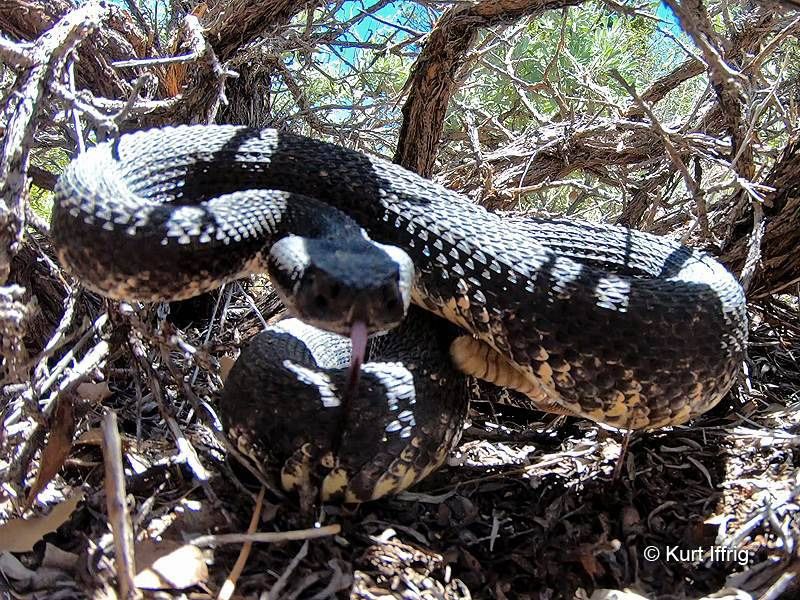
My hope was to get him to strike the camera. He eventually did strike it (twice) but it happened so fast the camera was unable to capture his fangs. I had to wipe venom off twice to keep shooting because it was blurring the lens. It's amazing how well these snakes have adapted to blend in to their surroundings, and you can see how easy it would be to accidentally step one while bushwhacking. The ones I've seen at lower elevations are usually black with more prominent diamond patterns or a completely different color (tan and beige) with well defined diamonds. Sean took a good shot of one on Mt. Lowe, with more defined markings. Same snake, different adaptation.

From what I've read these snakes are evolving quickly. Their venom is becoming stronger and their territorial range has increased all the way down to Baja. According to Dr. Sean Bush of Loma Linda Medical Center they been deemed the "people-biting snake in California." While they're not nearly as dangerous as the Mojave Green they can still do some serious damage to humans. Their venom is a hemotoxin, which attacks red blood cells and can trigger problems in breathing, loss of muscle control, and it can sometimes even cause you to go into a coma.

Some interesting fact about these snakes ~
• The military has has used them for advances in their night vision and heat seeking technology.
• When a rattlesnake's head is severed from its body it can still bare its fangs and bite. The warmth of a hand will activate the striking reflex.
• Rattlesnake venom, dried and stored, has been found to be "toxic to mice for at least 27 years," according to the USGS Southwest Biological Science Center.
• Rattlers are deaf. They smell with their tongue and track prey with a Jacobsen's organ on the roof of their mouth.

• Although they have excellent vision the heat sensing organs on the side of their face can detect prey that are as little 1/10 of a degree warmer than their background
• The number of rattles does not indicate their age, only the number of times they've molted (shed their skin), which can be several time a year.
• When a rattlesnake breaks a fang while striking, another one will grow back in its place.

